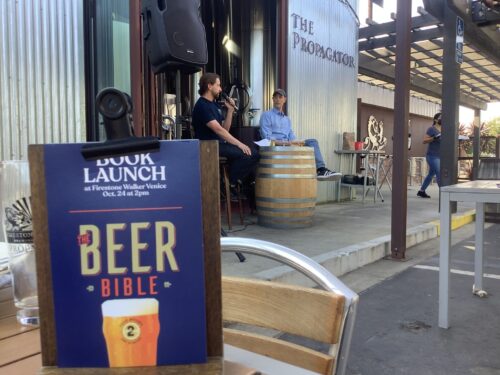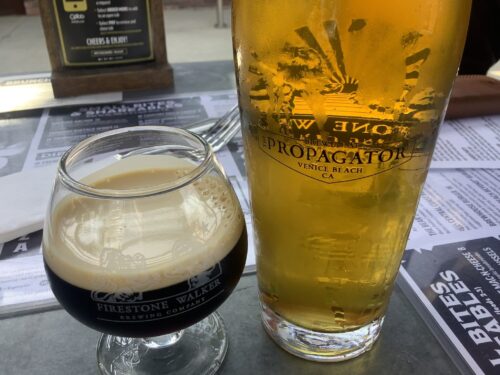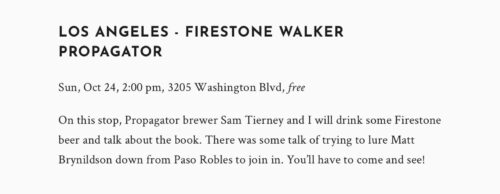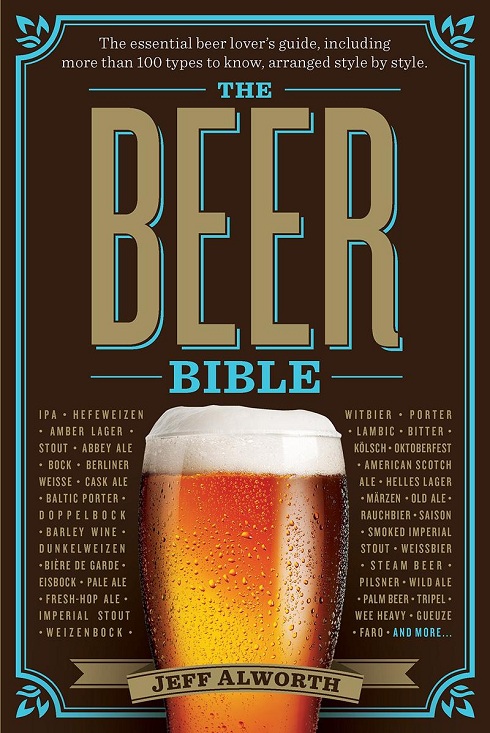The second edition of the Beer Bible has been out fir a month or so and author Jeff Alworth has been doing a bit of promotional travel for it and landed in Los Angeles at Firestone Walker’s Propagator to talk about it with Prop brewer Sam Tierney.

I learned a few interesting brewing and beer history factoids such as in the early days of American brewing German hops were used for aroma and American hops for bittering, something that is completely reversed now.
Yeast was not an ingredient per the reinheitsgebot because they did not consider it as staying in the beer. It was though of as transient and not in the finished product.
Germans had to have a discussion to formalize that dry hopping was kosheraccording to committee for the reinheitsgebot. Spoiler alert, it was deemed OK.
Trends to watch when it comes to IPA. Czech styled takes on America IPAs might be a new trend. And there might be a slight course correction for IPAs going back to more dry and bitter but keep the fruit.

If you did not buy the first version, I highly recommend. That and the 1909 American Bock that Firestone just added to their taplist.


